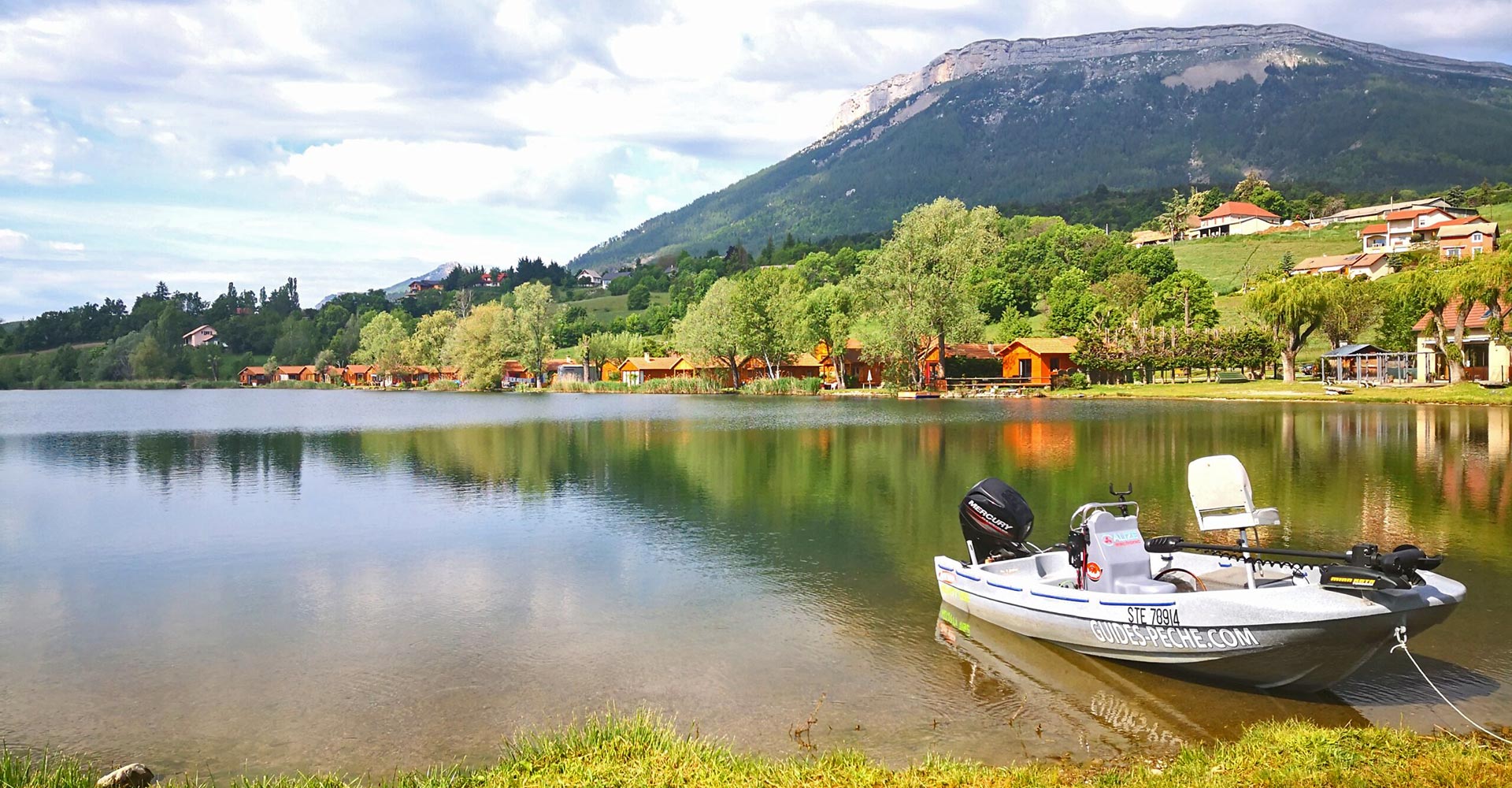
La Motte Flottante
Fishing
Enjoy our fishingAu camping de la Motte Flottante
BY BERNAD GALLIANO GUIDE DE PECHE
Imagine cosy wooden chalets on the edge of a lake where pike reign supreme. A lake rich in weed beds offering countless hiding places for the master Esox. This little Ireland is located in the Hautes-Alpes at the foot of the mountains…,
Here, fish must be returned to the water and, over the years, they have become very present in the waters of Lac de Pelleautier. Today I invite you, with a little emotion, to discover this exceptional site which, a long time ago, endured the technical errors as well as the moments of joy and laughter of a young boy discovering fishing…
27 hectares to explore
CHARACTERISTICS OF THE LAKE AND TOURISM
Located between the communes of La Freissinouse and Pelleautier, the lake was created in 1972 by the Gap canal. Its purpose is to supply water to farmland downstream and it is located at an altitude of 969 m, to the south-west of the Gapençais basin on the eastern slopes of the Céüse mountain. Ideally situated on the site of a depression formed by the glacier that descended from this massif during the Ice Age, it is fed by diversions of water from the Drac, a river that flows through the Champsaur valley. With a surface area of 27 hectares and a maximum depth of around 8 metres, it can store 1000000 m3 of water and has closed water status under article R 431-7 of the Environment Code. Known as La motte flottante (the floating mound) by its managers, this stretch of water was formerly a marsh. What made it special was the pile of peat and earth that drifted at will across the marsh. In the old days, when the marsh dried out, farmers would come and mow the clump and divide up the hay. Today, for safety reasons, the floating mound has been moored, but it remains a favourite spot for all aquatic species, fish and others (numerous birds, amphibians, insects, etc.). It is classified as a Natura 2000 site and remains a natural curiosity that anglers and hikers alike enjoy contemplating. As well as fishing, tourism is omnipresent on the shores of the lake, and mountain bikers and horse-riders will find plenty to do with the many routes that leave from the site. In addition to their luxurious wooden chalets, Claude and Amaury Gouaille, the owners, offer paddleboat hire for the more sporty guests. On the terrace, you can also quench your thirst or enjoy fine cuisine based on fresh local produce, with a view over the lake.
ONE OF THE FIRST NO-KILL LAKES FOR PREDATORS IN FRANCE
It was in 2007, after an alarming drop in the numbers of beautiful fish, that the idea of no-kill management was born – I wasn’t a guide at the time, so it was my colleague Sébastien Cartairade who came up with the idea. Around a table, with the Gouaille family, we discussed the problems. What emerged were excessive levies and the absence of any real management system with strict rules to be respected. With my brother and Sébastien, we put forward the advantages of no-kill and the added value it would bring. Shortly afterwards, the adventure began at La motte flottante… Claude Gouaille decided to open fishing on 1 March, if the lake was completely thawed, and to close it on 1 December at the first extreme frost. He introduced a system of cards giving certain volunteers (myself included) the right to control the lake. A set of rules was drawn up authorising only fly fishing and lure fishing (no live, still or handled fishing). They stipulate that any pike caught must be carefully returned to the water and handled with the appropriate tools (gags, pliers, etc.). Titanium, steel or large-diameter fluorocarbon leaders are compulsory. To obtain fishing rights, anglers must have a fishing licence for the lake. This is available by the season, week, day or half-day and gives permission to fish from the shore or from a personal boat. Only electric motors are permitted. Rotengles, gudgeon, tench and chub are also well represented, but it is forbidden to catch them and they are also subject to the regulations. For spearfishing, the price is based on the number of rods, unlike for predators, which is based on the number of anglers.
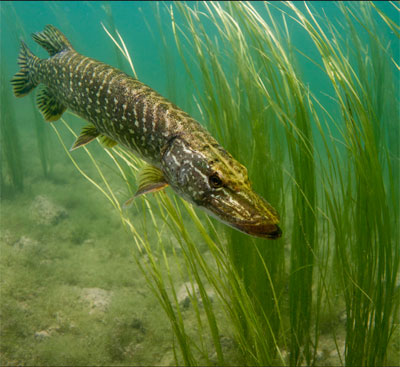
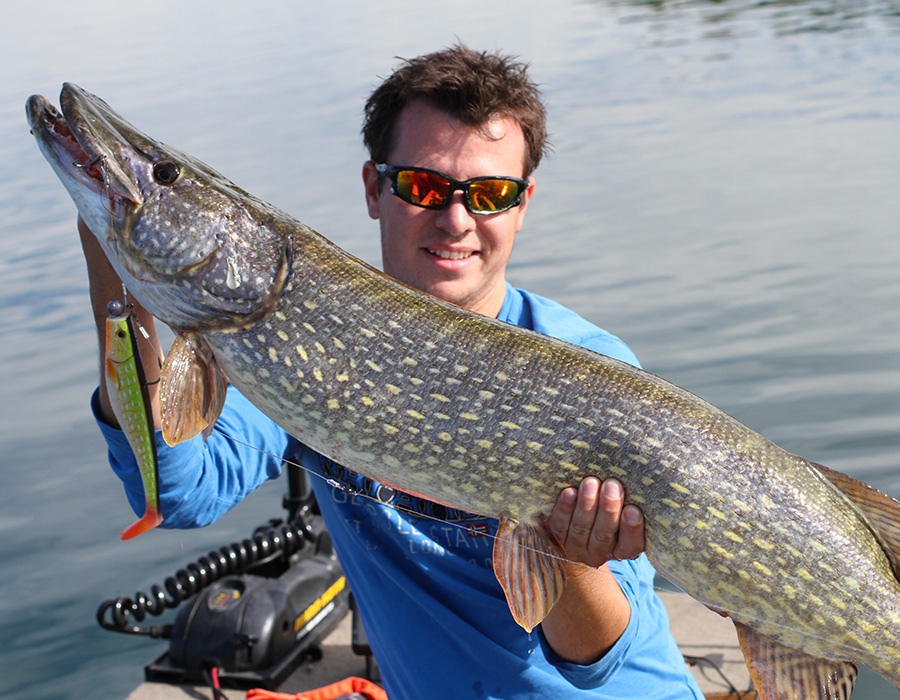
PRACTICAL INFORMATION :
No kill carnivorous or Cyprinid fishing cards for the lake are compulsory.
Annual cards have a 10% discount for subsequent years.
There are a number of advantages for those who own a boat. In particular, you’ll have access to the breaks, the few grass beds in the open water and the deepest areas, which are great for fishing for the prettiest fish in summer.
If you wish to fish from the shore, wading will allow you to free your casting angel and access the most interesting areas. There is one area where fishing and sailing are prohibited, marked by buoys and located along the campsite and in the park where the snack bar is located. The only way to fish in this area is to rent a chalet on the campsite. You can then fish in front of your chalet and even moor your boat there.
During the fight, the angler must maintain contact with the fish at all times. The use of barbless hooks is a big plus for safety when casting, but also makes it easier to unhook, especially as regulations will eventually change to require barbless hooks, so you might as well start getting well equipped straight away…
SUITABLE EQUIPMENT
Racine, in his play Les plaideurs, said: “Oui veut aller loin ménage sa monture”. This proverb takes on its full meaning here and makes us look first and foremost at the equipment. I like to use two fast action sets that allow me to deal with all situations throughout the season. A 9-foot rod for 8/9 sore allows me to cast small and medium-sized imitations and an 8.6-foot rod for 10-gauge line for big bites. To the latter, I like to add a reel for 9 and a reel for 10 line, both with three spools fitted with three silks of different densities. A floating line for surface fishing in summer, an intermediate line for fishing over weedbeds on the edges or in open water without hooking and a diving S4 line for deep fishing (more than enough for water depths not exceeding 8 metres). Don’t forget to connect your lines to around thirty metres of backing so that you can counter the rushes of a nice fish… Well-metered specimens are not uncommon here. As far as leaders are concerned, we recommend a leader of around 1.20 metres of 40 or 45/100 fluorocarbon connected to 1 metre of 80 or 9/100 fluorocarbon. If you’re worried about the latter, you can use a steel or even titanium leader instead.
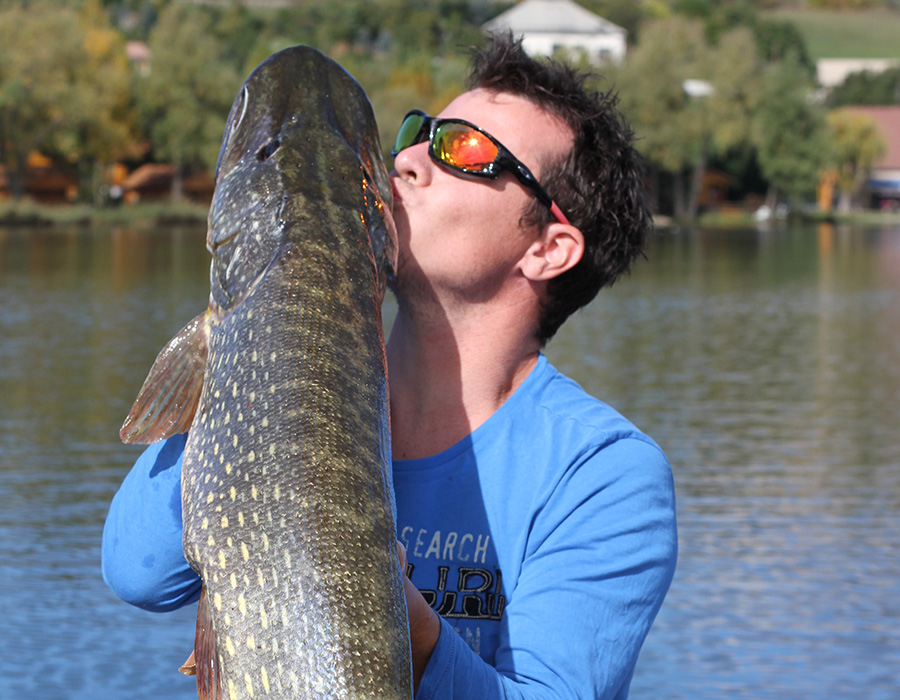
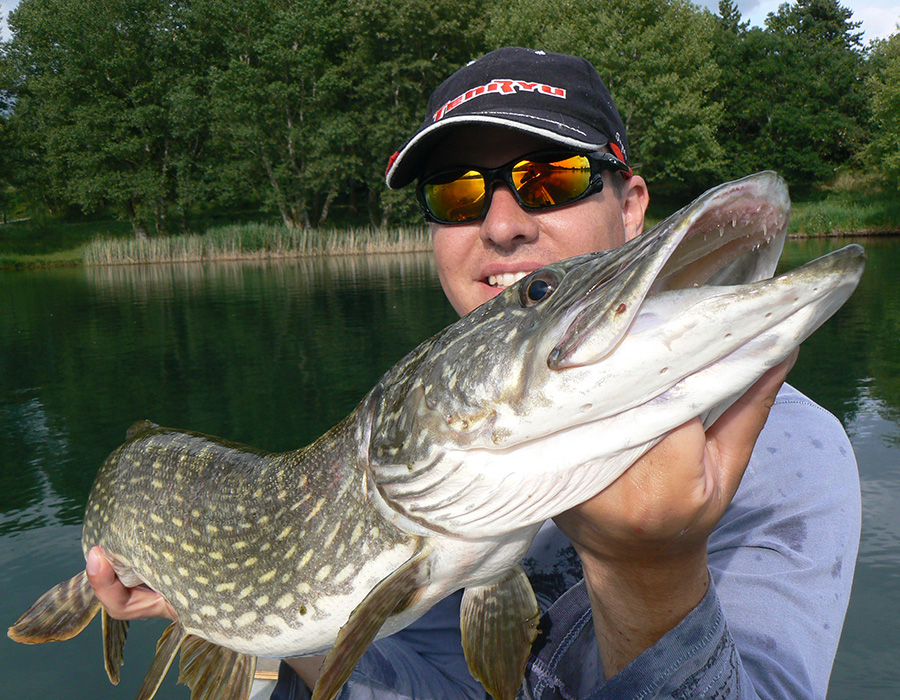
THE CHOICE OF STREAMERS
As the season progresses, the types of streamer used at Lac de Pelleautier will vary. There will be different sizes and colours to choose from, as well as different shapes and vibrations. At the beginning of March, when the site opens, the water is often cold and devoid of weed beds, so we have to fish with S3 or S4 sinking lines and slowly strip bulky flies. These are mounted on 8/0, 10/0 or even tandem hooks. The bluish colours accompanied by pink and silver are very effective here. A little later, chartreuse and yellowish tones will stand out, followed by the timeless pearly white. More imitative colours can make all the difference on bright days in clear water. The further into the season you go, the smaller your streamers will be (mounted on 4/0 hooks, or even smaller) in order to closely or remotely imitate the small fry frolicking on the edges. The type of rig is also important if you are dealing with active or simply curious fish. In the first case, Guido Vinck’s famous ‘Piker’s point’, whose main material is bucktail, will emit small aggressive vibrations. It generally tends to nose dive on stops, which will give it an unstoppable jerky swimming action during feeding frenzies. Baitfish rigs, on the other hand, will push a lot of water around and remain almost motionless during stops. Use them on fish that are not very determined, on the move, but not really hunting yet. As far as animations are concerned, it will be up to the angler to adapt according to the mood of the fish, bearing in mind that you will need to speed up if the fish is playful, or slow down if it is apathetic. Mastering the double pull is essential for this type of fishing and, if this is not the case, I invite you to practise at home in a field or to be accompanied by a guide or someone who practises it regularly. Finally, it goes without saying that fishing in pairs and in two different ways will help you to find the pattern of the day more quickly and therefore enjoy yourself more easily on the water.


